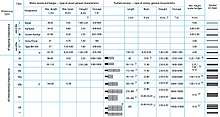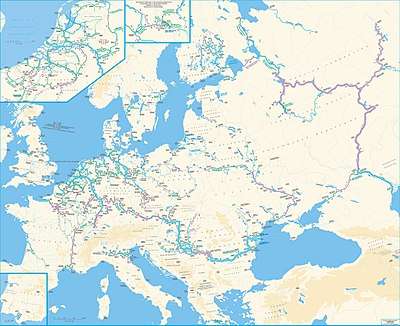Waterway

A waterway is any navigable body of water. Broad distinctions are useful to avoid ambiguity, and disambiguation will be of varying importance depending on the nuance of the equivalent word in other languages. A first distinction is necessary between maritime shipping routes and waterways used by inland water craft. Maritime shipping routes cross oceans and seas, and some lakes, where navigability is assumed, and no engineering is required, except to provide the draft for deep-sea shipping to approach seaports (channels), or to provide a short cut across an isthmus; this is the function of ship canals. Dredged channels in the sea are not usually described as waterways. There is an exception to this initial distinction, essentially for legal purposes, see under international waters.
Where seaports are located inland, they are approached through a waterway that could be termed "inland" but in practice is generally referred to as a "maritime waterway" (examples Seine Maritime, Loire Maritime, Seeschiffahrtsstraße Elbe). The term "inland waterway" refers to navigable rivers and canals designed to be used by inland waterway craft only, implicitly of much smaller dimensions than seagoing ships.
In order for a waterway to be navigable, it must meet several criteria:
- it must be deep enough to accommodate vessels loading to the design draft;
- it must be wide enough to allow passage of the vessels with the design width or beam;
- it must be free of obstacles to navigation such as waterfalls and rapids, or offer a way around them (such as canal locks or boat lifts);
- its current must be mild enough to allow vessels to make headway upstream without undue difficulty;
- the wave height (on lakes) must not exceed the value for which the class of vessel is designed.
Vessels using waterways vary from small animal-drawn barges to immense ocean tankers and ocean liners, such as cruise ships.
Example of classification of inland waterways
The European Conference of Ministers of Transport established in 1953 a classification of waterways that was later expanded to take into account the development of push-towing. Europe is a continent with a great variety of waterway characteristics, which makes this classification valuable to appreciate the different classes of waterway. There is also a remarkable variety of waterway characteristics in many countries of Asia, but there has not been any equivalent international drive for uniformity. This classification is provided by the UN Economic Commission for Europe, Inland Transport Committee, Working Party on Inland Water Transport. A low resolution version of that map is shown here.

See also

References
External links
![]() Media related to Waterways at Wikimedia Commons
Media related to Waterways at Wikimedia Commons
| Look up waterway in Wiktionary, the free dictionary. |
| Wikivoyage has travel information for Waterways. |
- Blue Book on European inland waterways - access to the Blue Book database.
The objective of the “Blue Book” is to establish an inventory of existing and envisaged standards and parameters of "E-waterways" and ports in Europe and to show, on an internationally comparable basis, the current inland navigation infrastructure parameters prescribed on the Agreement on Main Inland Waterways of International Importance